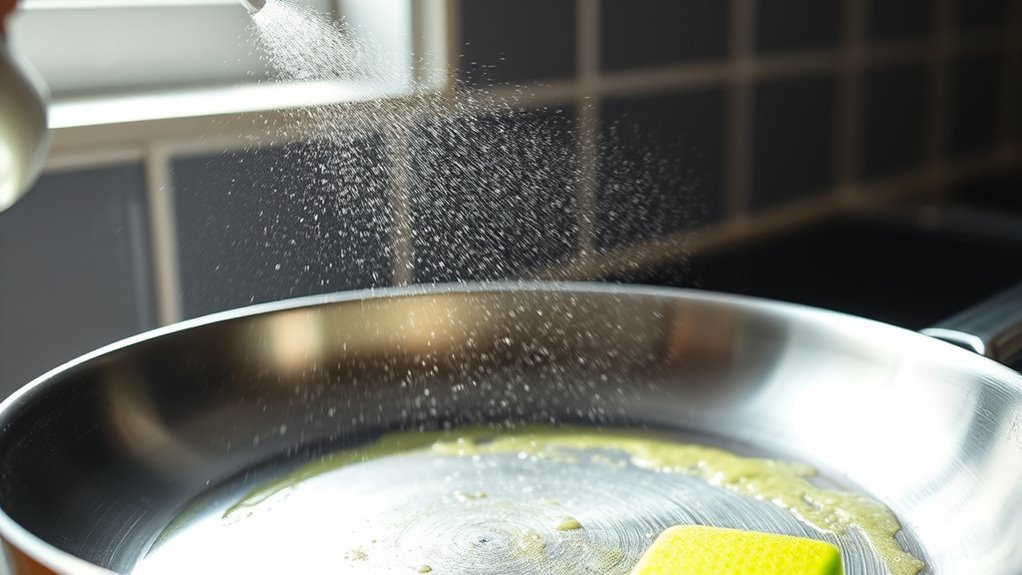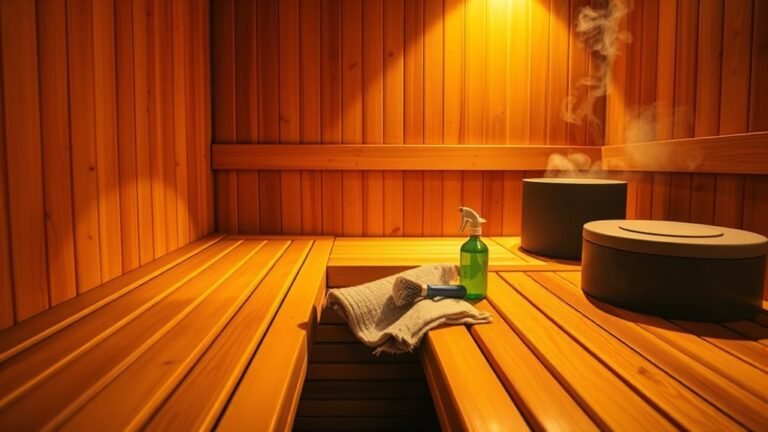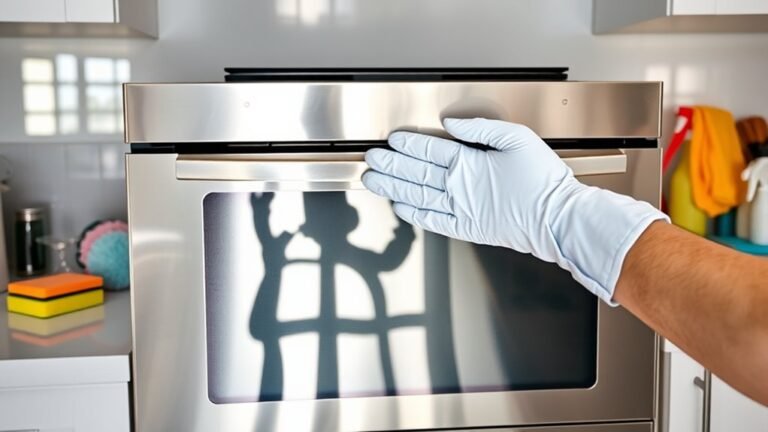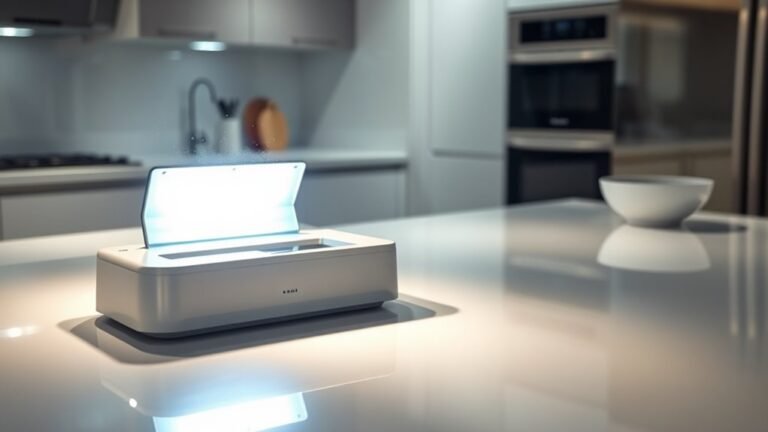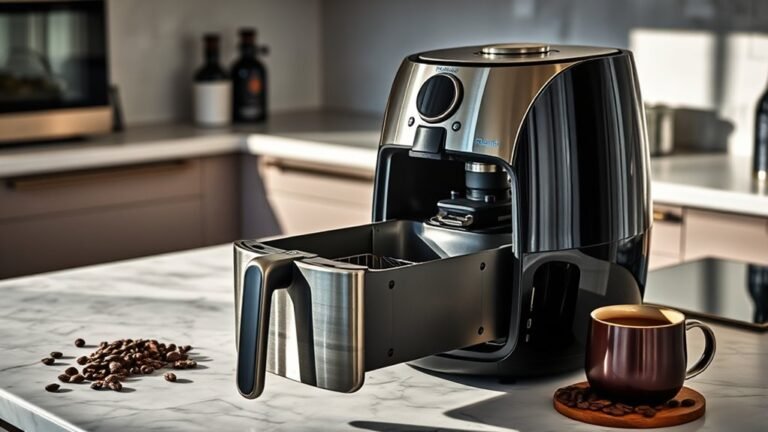How to Clean Grease
To clean grease, start by identifying the type—cooking, automotive, or industrial—as this affects the method you’ll use. Gather supplies like dish soap, warm water, microfiber cloths, and a degreaser spray if needed. For kitchen surfaces, mix soap with warm water, apply, let it sit, then scrub and rinse. For fabrics, blot, apply soap, let it soak, gently rub, then rinse. Taking these steps carefully helps tackle grease effectively. There’s more you can do to prevent buildup and handle different surfaces with ease.
Identifying Different Types of Grease Stains

How can you tell one grease stain from another? It starts with knowing the types of grease and their common sources. You’ll find cooking grease from oils and butter, often in your kitchen, leaving a slick, yellowish mark. Automotive grease, thicker and darker, comes from engines or machinery, marking your clothes or garage floors. Industrial grease, used in heavy equipment, tends to be stubborn and black. Identifying these stains helps you choose the right way to tackle them, freeing you from frustration. Recognizing where the grease came from—whether it’s food, a bike chain, or factory tools—lets you act swiftly and effectively. This knowledge empowers you to reclaim your space and keep your belongings clean without unnecessary hassle.
Essential Tools and Cleaning Supplies for Grease Removal
Cleaning grease effectively requires having the right tools and supplies on hand. You’ll want to gather quality grease cleaners designed to break down stubborn oils without harsh chemicals that limit your options. Microfiber cloths and scrub brushes give you control over different surfaces, ensuring you don’t damage what you’re cleaning. A spray bottle filled with a homemade or store-bought degreaser lets you target spots precisely. Gloves protect your hands, offering freedom to tackle tough grime without worry. Depending on your cleaning methods, having a bucket of warm water for rinsing and a sponge can speed things up. With these essentials ready, you’re empowered to choose the best approach and reclaim your space from grease’s grip efficiently and confidently.
Step-By-Step Guide to Cleaning Grease From Kitchen Surfaces
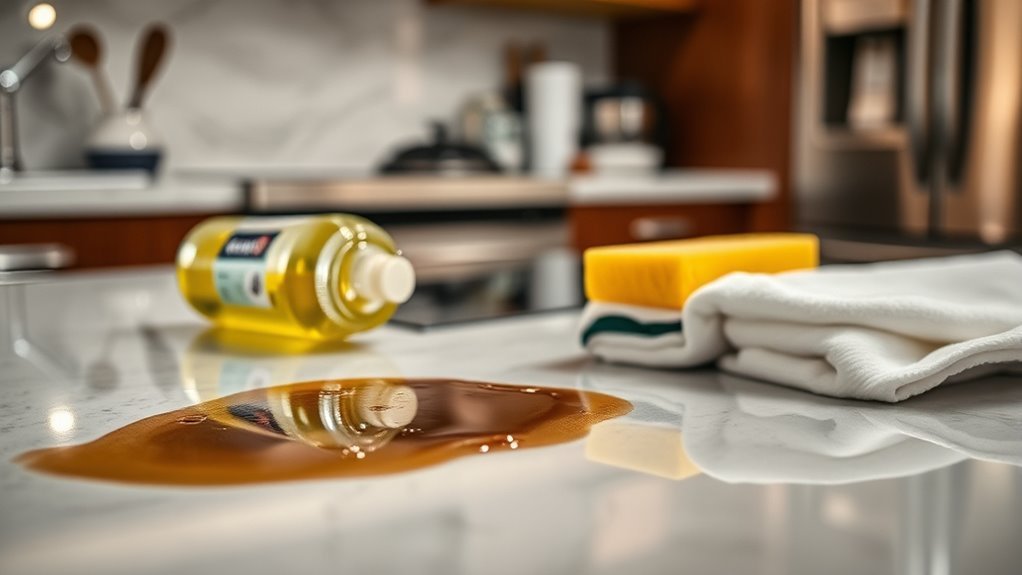
Tackling grease on your kitchen surfaces starts with a clear plan and the right technique. First, gather your supplies—warm water, dish soap, and a scrub brush or sponge. Mix dish soap with warm water to create a powerful grease removal solution. Next, apply this mixture to greasy areas and let it sit for a few minutes to break down buildup. Scrub gently but thoroughly, focusing on stubborn spots. Then, rinse with clean water and dry with a microfiber cloth to prevent streaks. For tough grease, try a baking soda paste for extra scrubbing power. Regular kitchen maintenance like this keeps surfaces spotless and extends their life. Following these steps lets you reclaim your kitchen without hassle or harsh chemicals.
Effective Techniques for Removing Grease From Fabrics
Although grease stains on fabrics can be stubborn, you can effectively remove them with the right approach. Start by gently blotting the stain to avoid pushing it deeper. Next, apply a liquid dish soap or a specialized stain removal product directly to the grease spot. Let it sit for about 10-15 minutes to break down the oils. Then, gently rub the fabric together or use a soft brush to work the solution in. Rinse with warm water and check if the stain has faded before washing. Always follow the garment’s care label to protect your fabric during cleaning. By mastering these fabric care techniques, you’ll keep your clothes grease-free and maintain your freedom from stubborn stains.
Preventative Measures to Minimize Grease Buildup

Since preventing grease buildup is often easier than removing it, adopting simple habits can save you time and effort. Grease prevention is all about consistent kitchen maintenance. Keep your cooking area clean, use splatter guards, and wipe surfaces immediately after use. Proper ventilation also helps reduce airborne grease.
| Habit | Benefit |
|---|---|
| Regular surface wipe | Stops grease from setting |
| Use splatter guards | Limits grease spread |
| Clean exhaust fans | Improves air quality |
| Store oils properly | Prevents accidental spills |
| Schedule deep cleans | Avoids tough buildup |
Frequently Asked Questions
Can Natural Remedies Replace Commercial Degreasers Effectively?
You might wonder if natural alternatives can really match commercial degreasers. While homemade solutions like vinegar, baking soda, and lemon juice are powerful and eco-friendly, they may not always work as fast or as thoroughly on tough grease. But if you value freedom from harsh chemicals and want safer options, these natural remedies are worth trying. They give you control and a cleaner conscience, even if you sometimes need a bit more elbow grease.
How Long Does It Take for Grease Stains to Set Permanently?
Grease stains can set faster than a rocket launch—often within minutes to an hour, depending on the surface and temperature. If you want to keep your freedom from stubborn marks, act quickly because the setting time varies but once it’s permanent, grease stain removal becomes a nightmare. Don’t let time chain you; tackle those stains right away to keep your clothes and surfaces clean and your life hassle-free.
Are There Health Risks Associated With Inhaling Grease Cleaning Chemicals?
Yes, you should be cautious because chemical exposure from grease cleaning products can cause respiratory issues. When you inhale these fumes, it might irritate your lungs, leading to coughing or shortness of breath. To keep your freedom to breathe easy, always use these cleaners in well-ventilated areas or wear a mask. Protecting yourself lets you tackle tough grease without risking your health or feeling trapped by harmful chemicals.
Can Grease Removal Damage Delicate Kitchen Appliances?
Did you know that 70% of kitchen appliance damage comes from improper cleaning methods? When tackling grease removal, you’ve got to take into account grease types and your appliance materials. Some aggressive cleaners can harm delicate surfaces like aluminum or plastic, causing discoloration or corrosion. To keep your freedom intact, choose gentle, appliance-safe products tailored to the grease you’re dealing with. That way, you protect your gear without sacrificing cleanliness or your peace of mind.
What Is the Best Method to Dispose of Used Grease Safely?
When you’re figuring out the best way for grease disposal, think about recycling grease instead of tossing it down the drain. It’s better for the environment and keeps your pipes clear. You can pour cooled grease into a sealed container and take it to a local recycling center or hazardous waste facility. This way, you’re free from worries about clogging or pollution, and you’re doing your part in keeping things clean and sustainable.
